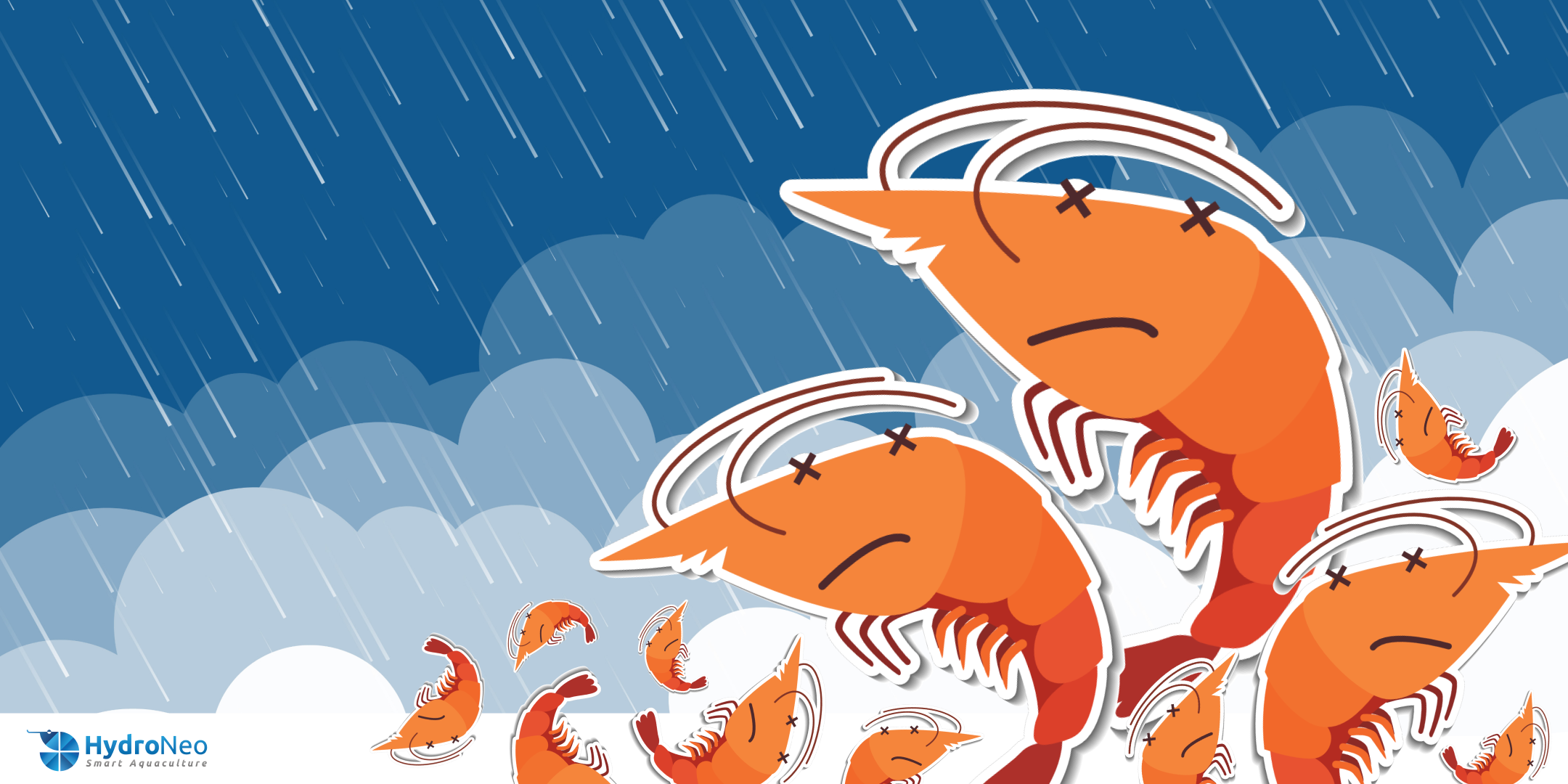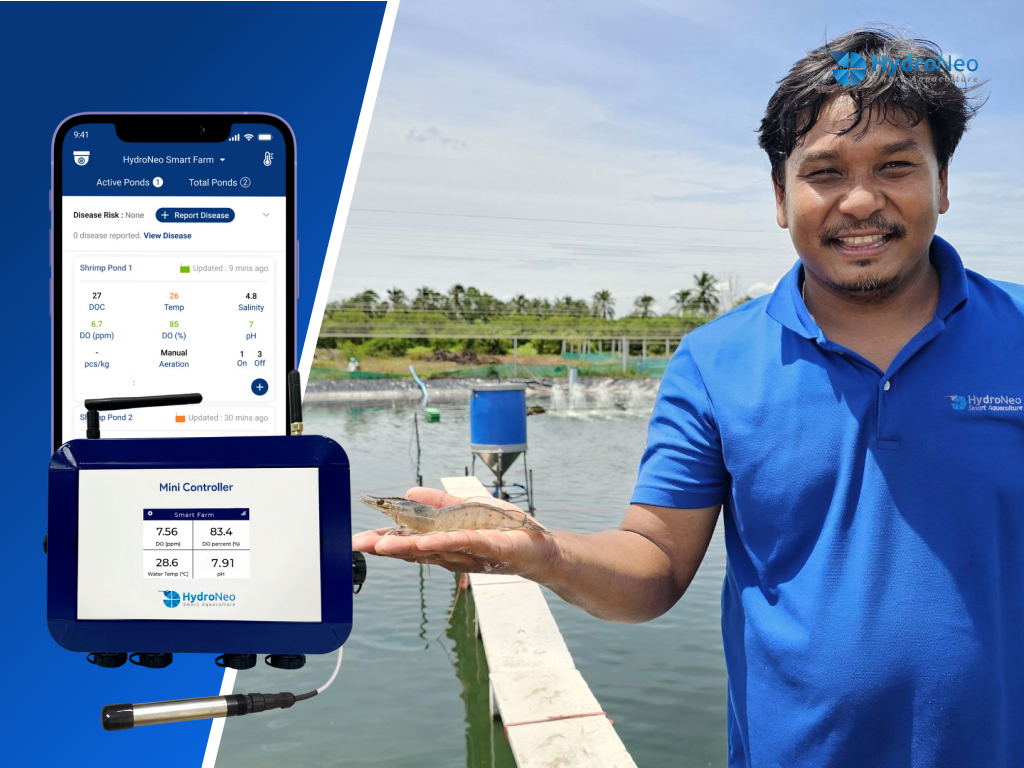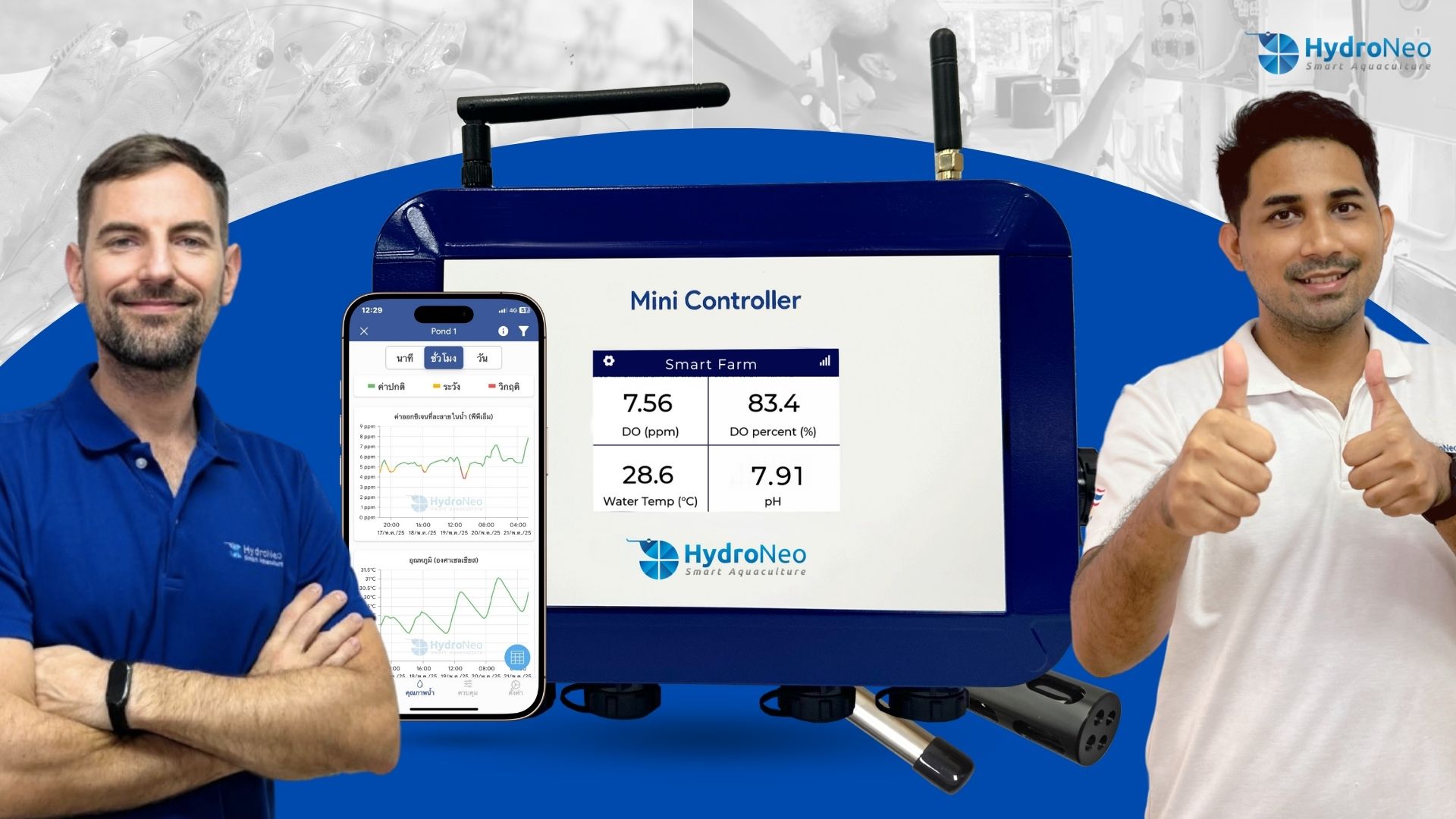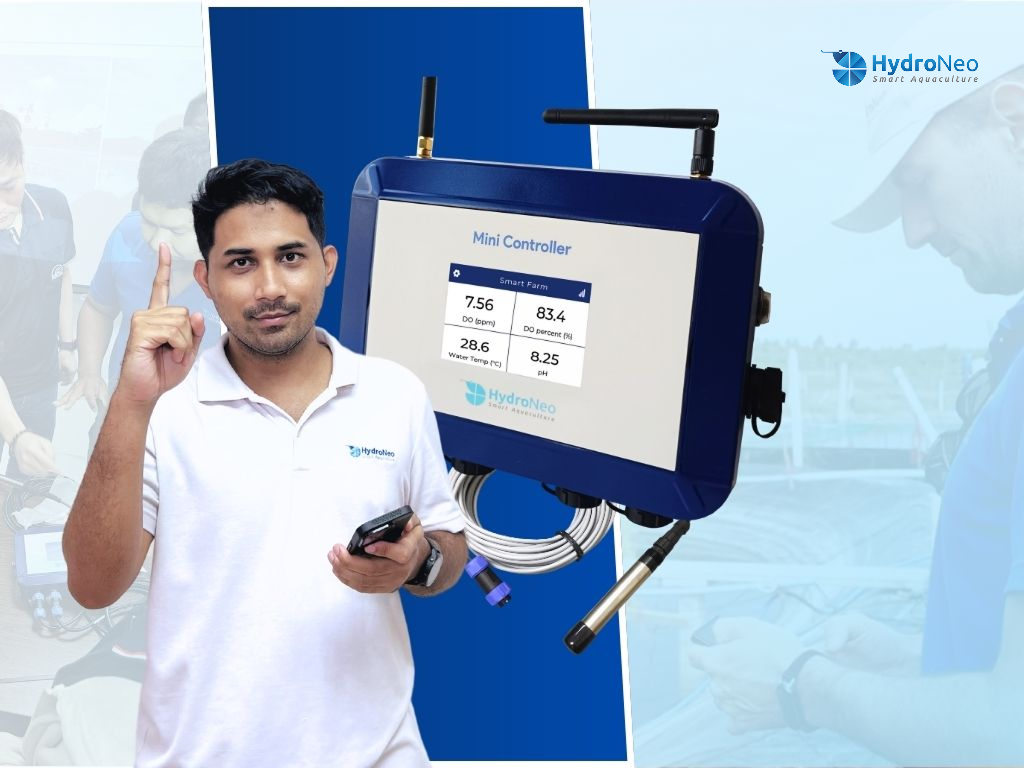After a long, intense hot season, mid-May signals the start of the rainy season. The southwest monsoon brings moisture from the Indian Ocean and the Andaman Sea into the country, causing rain to fall until mid-October. But for those in the South, it doesn’t end there. From mid-October to mid-February, they also face the cold winds from China (the northeast monsoon), which pick up more moisture as they pass over the Gulf of Thailand. This means shrimp farmers in the south must deal with a “8 parts rain, 4 parts sun” climate for most of the year.
When the Rains Come...So Do the Problems
As the rainy season begins, shrimp farmers must prepare their minds and their ponds. The hard work is about to start because the troublesome rain brings with it a host of issues, from fluctuating water quality and weakened shrimp health to plummeting survival rates and relentlessly rising costs, including electricity, medicine, and water treatment supplies.
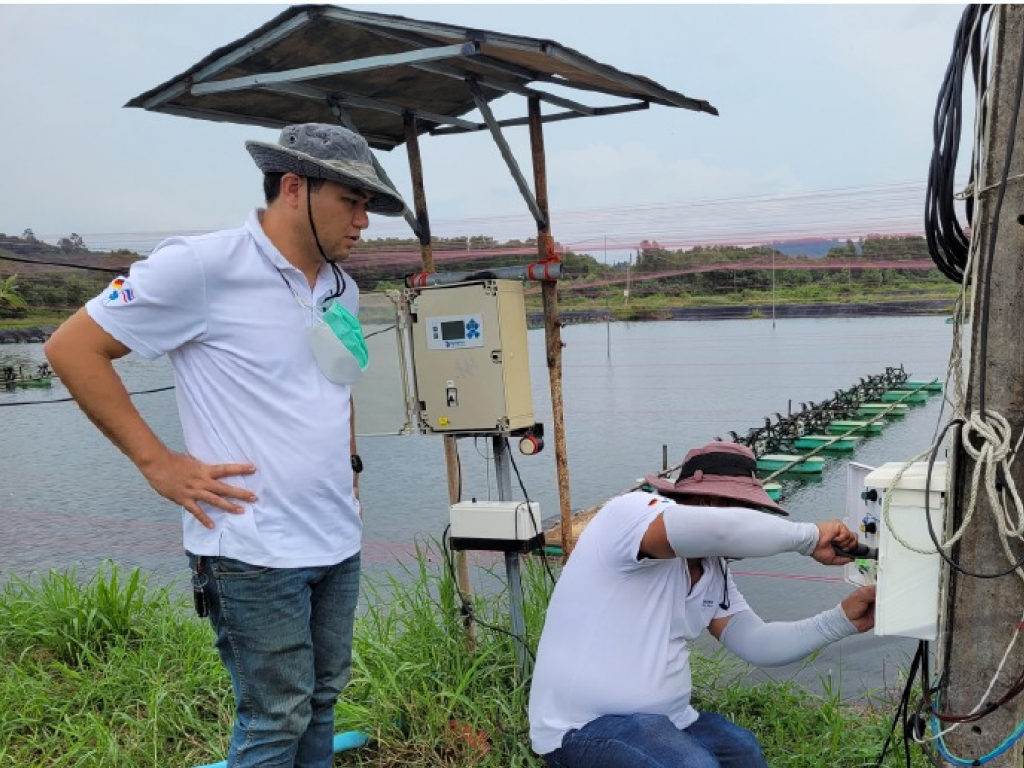
Fluctuating Water Quality
Sudden drops in salinity: Rain dilutes the salinity in the pond, causing stress and reduced immunity in shrimp, making them more susceptible to diseases. This is especially true for White shrimp (Litopenaeus vannamei), which prefer stable salinity.
pH and alkalinity changes: Rain is typically acidic (with a pH of around 5.6). When it falls into the shrimp pond, it alters the existing pH and alkalinity levels. This can cause shrimp to stop eating, become weak, grow slowly, and have difficulty molting, often leading to death.
Reduced oxygen levels: Rain is accompanied by dark clouds that block sunlight. With less light penetrating the pond, the green algae responsible for photosynthesis and oxygen production work less effectively. As a result, oxygen levels in the pond drop, causing shrimp to surface for air, suffer from oxygen deprivation, and potentially die.
Weakened Immunity...High Risk of Epidemics
When water conditions change rapidly, such as a drop in salinity or pH, shrimp become stressed. This weakens their immune systems and makes them more vulnerable to infections.
Creates ideal conditions for harmful microbes: The humid weather and cooler water of the rainy season are a haven for pathogens like White Spot Syndrome Virus (WSSV) and Early Mortality Syndrome (EMS), which can spread rapidly and wipe out an entire pond in a short time.
Electricity Issues
Thunderstorms, common during the rainy season, can cause power outages or electrical system failures. This affects the operation of aerators, leading to interruptions in oxygen supply and abnormal water circulation.
At the same time, running aerators more frequently to boost oxygen levels increases production costs.
Rain, Salinity Changes, and Heavy Impacts on Shrimp Health
Shrimp are osmoregulators, meaning they can control the salinity within their bodies. They must constantly maintain a balance of water and salt that is close to their external environment. When pond salinity drops due to rain, especially suddenly, it has several negative impacts on shrimp health.
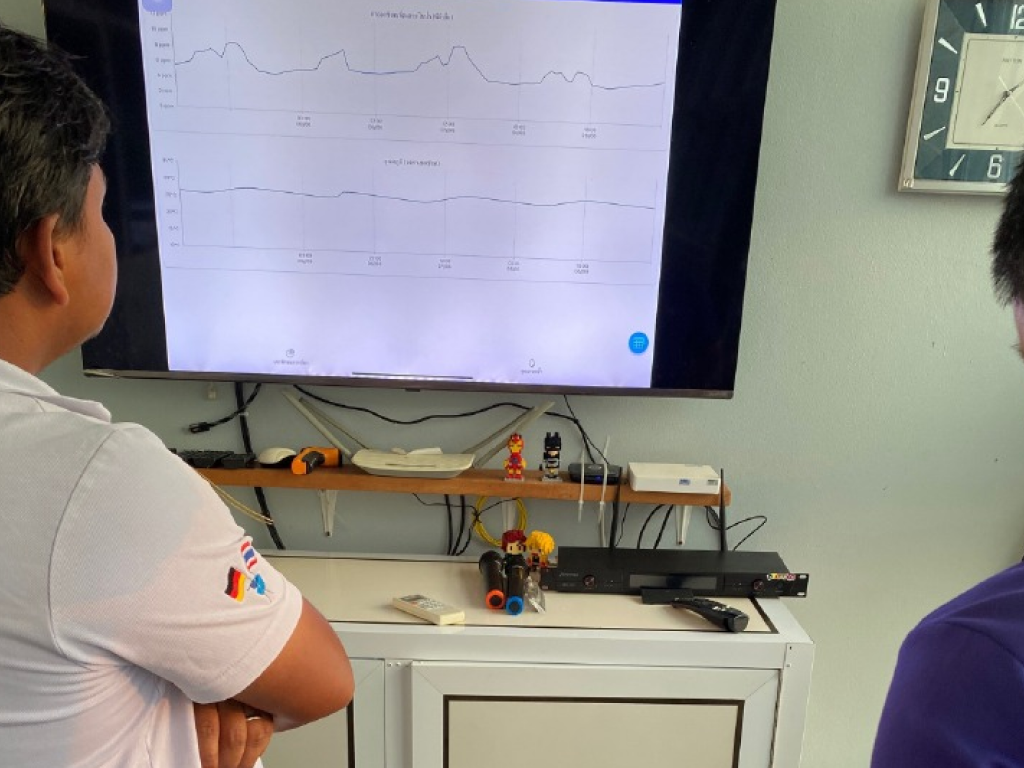
Osmotic Stress: To maintain mineral levels in their bodies, shrimp must work hard to prevent too much fresh water from entering their cells. This process requires a significant amount of energy. If water quality changes too quickly or drastically, the shrimp’s internal systems can be overwhelmed.
Increased Energy Consumption: Shrimp will divert energy that would normally be used for growth, digestion, or immunity to instead maintain their internal balance, resulting in slower growth.
Soft and Thin Shells: Salinity affects the absorption of essential minerals like calcium and magnesium, which are necessary for building a strong shell. If absorption is poor, the molting process becomes risky and can lead to death.
Imbalance of Pond Microbes: Low-salinity water alters the microbial balance in the pond, allowing harmful bacteria like Vibrio spp. to thrive, which increases the risk of disease.
Shrimp grow best in water with relatively stable salinity. Sudden changes, like those from heavy rain, can overwhelm their bodies and lead to numerous problems.
Every Drop of Rain is a Risk
The rainy season brings rapid and unpredictable changes in water quality, such as decreased salinity, shifting pH, and sudden drops in oxygen—all of which directly impact shrimp health. However, with good preparation and smart farming tools to help manage the pond, there’s no need to worry about the countless problems that come with the rain.
Start investing in upgrading your shrimp farm to a smart system. Using Smart Farm technology like HydroNeo can reduce risks and increase management efficiency.
Real-time Water Quality Monitoring
HydroNeo helps you track key pond parameters in real-time, including:
Dissolved Oxygen (DO)
pH
Temperature
If any abnormal changes occur, the system sends an immediate notification through the app, allowing you to make quick, corrective decisions.
Data for Prediction
HydroNeo doesn’t just measure; it also stores data in the cloud for trend analysis, helping you to:
See warning signs before problems arise.
Plan feeding, mineral supplementation, and water quality adjustments more accurately.
Smart Warning System
No need to watch the pond 24/7. HydroNeo sends instant alerts via the application when water quality values go beyond safe limits, such as:
DO dropping below a critical point.
Unusually rapid changes in pH.
This allows farmers to take action before their shrimp are seriously affected. Let HydroNeo be your key assistant in managing your pond during the rainy season—reducing risks, enabling precise planning, adapting quickly, and preventing problems before they start.
Be Prepared for the Rainy Season with a Comprehensive Backup Plan
Rain isn’t a problem if you’re prepared! Keep water treatment supplies like salt, minerals, lime, and probiotics ready for use. Also, plan for power outages by having a backup generator or an alternative power system.
Other countermeasures, in case chemical additions are needed to restore normal water conditions, include:
Try to keep salinity and pH levels stable by adding sea salt or water conditioners as needed.
Use dolomite or lime to help adjust alkalinity.
Reduce feed amounts during rainy periods to prevent water contamination.
Regularly siphon waste from the pond bottom to control harmful bacteria like Vibrio.
Transitioning to a Smart Farm system is a worthwhile long-term investment. It allows you to handle the volatility of rainfall and the erratic weather patterns caused by global boiling and the El Niño and La Niña cycles.
Incorporating technology, such as a real-time water quality monitoring system that checks DO, temperature, and pH via your mobile phone, provides automatic alerts for abnormal readings. This enables faster decision-making and timely problem-solving. Importantly, a Smart Farm system can also control feeding and aeration equipment, even when you are far from the farm.
It doesn’t matter how many months it rains when you have HydroNeo watching over your pond 24/7. Because the rainy season isn’t an enemy… if you have the right tools!

